13 Ways To Tell If Your Vintage Jewelry Is Worth Any Money
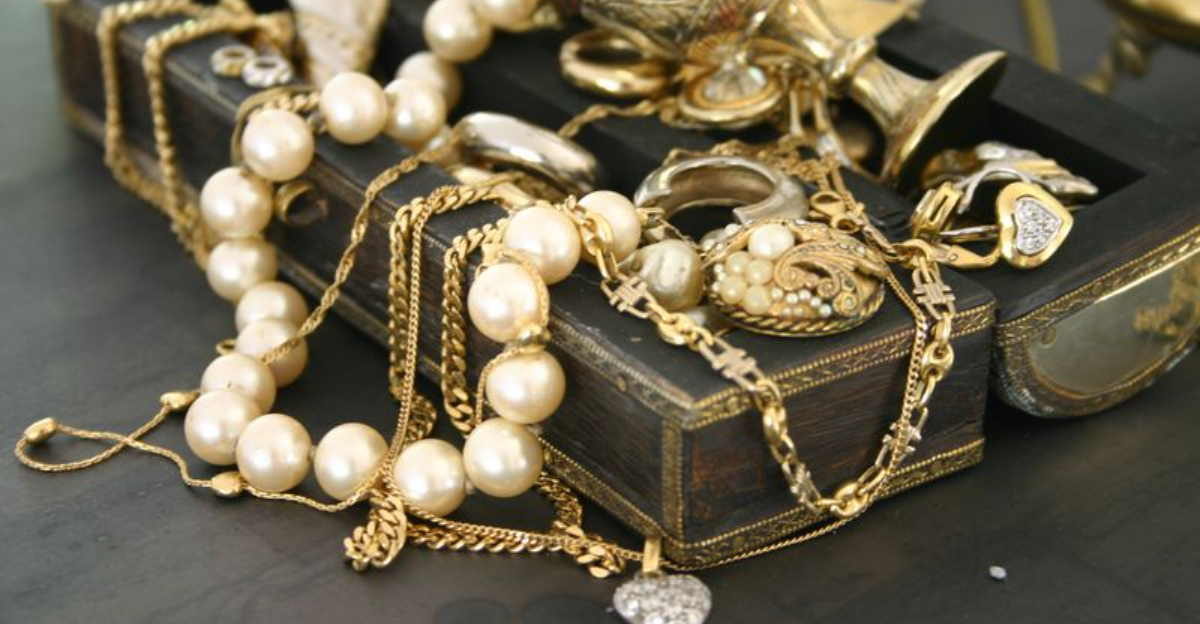
Ever gazed into grandma’s jewelry box, eyes sparkling with curiosity, and thought, “Am I holding a glittering goldmine… or just sentimental sparkle?” You’re not alone! Vintage jewelry has a magical allure—each piece whispers stories of glamour, romance, and mystery.
But when it comes to value, things get a little trickier. Is that brooch a priceless heirloom or just fabulous costume flair? After spending a whimsical afternoon untangling chains and decoding markings in my own treasure trove, I decided to do a little detective work.
The result? A dazzling list of 13 foolproof clues to help separate the true treasures from the pretty pretenders. From secret stamps to telltale tarnish, these tips will turn you into a vintage jewelry sleuth in no time.
So grab your magnifying glass, channel your inner treasure hunter, and let’s dive into the glittery, glitzy world of hidden gems and sparkling surprises!
1. It Has a Hallmark or Stamp
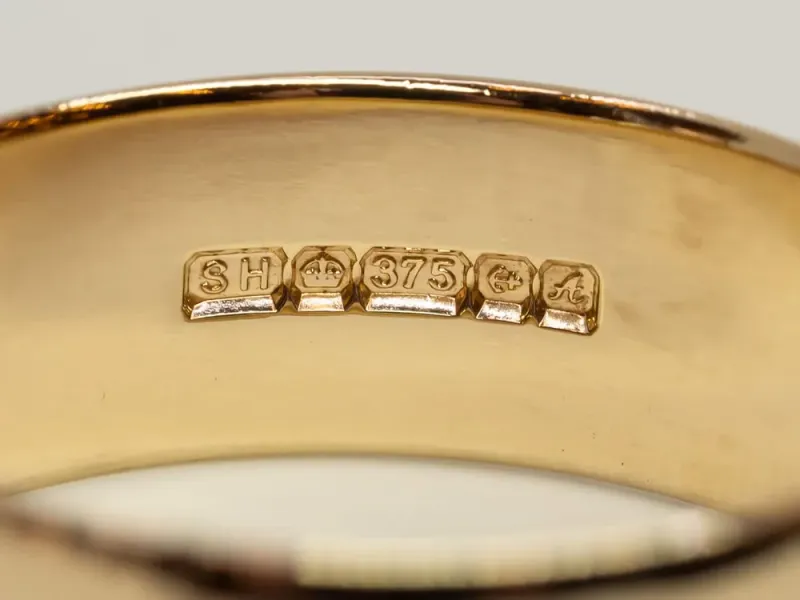
Ever feel like a jewelry detective? I did when examining my grandmother’s old necklace. Check for tiny stamps like “925,” “14K,” “18K,” “PLAT,” or brand signatures (Tiffany, Cartier, etc.). These markings are like VIP passes to the world of real value. My friend once found a ’14K’ stamp on a brooch at a flea market – turned out it was worth more than her car!
A hallmark is a tiny symbol that speaks volumes. It tells the metal purity and sometimes the place it was made. The presence of these stamps can instantly elevate a piece from costume to collectible. But beware of the sneaky imposters—some fakes come with faux hallmarks.
Take the time to inspect your jewelry closely. A magnifying glass or loupe can be your best friend. While not every piece will have a stamp, if it does, it’s a great start to determining worth. So grab your magnifier and get ready to play detective; you might just uncover a hidden treasure!
2. The Weight Feels Right
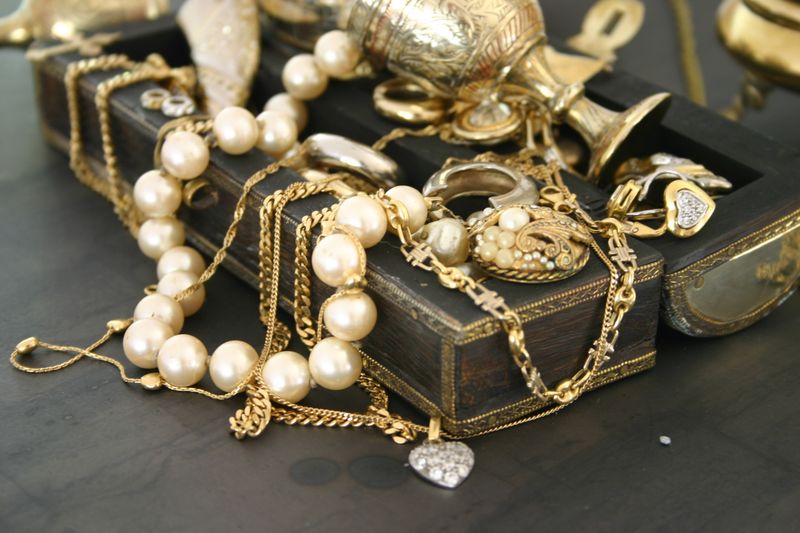
Weight and see! That’s right, the heft of your jewelry can tell a tale. Real metals and stones usually have a solid, heavier feel. I once picked up a bracelet that felt like air, just to find out it was costume jewelry pretending to be fancy!
If you’re wondering about a piece’s authenticity, give it the weigh-in test. Heavy metals like gold, silver, and platinum carry weight because they’re dense. The same goes for genuine gemstones – they’ve got a heft that glass and plastic simply can’t match.
Next time you hold a piece, close your eyes and feel its weight in your palm. Is it substantial, or does it float like a feather? While not foolproof, weight is a good indicator of quality. Just remember to trust your instincts—sometimes, a simple heft test can help separate the real McCoy from the pretenders.
3. It’s Made with Real Gems (Not Glass or Plastic)
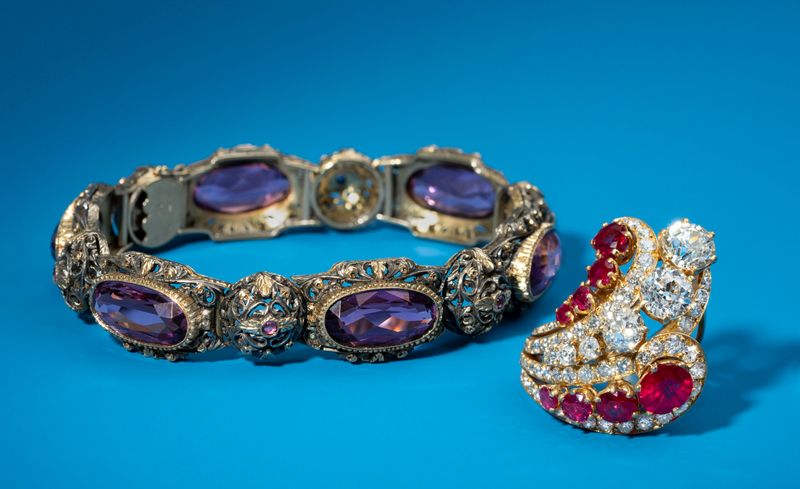
Have you ever tapped a gemstone against your teeth? My grandma taught me this quirky trick, and it turns out, it works! Real gems feel cold and hard; plastics feel, well… plasticky.
When you have a stone in question, a gentle tap can reveal a lot. Cold, hard surfaces indicate authenticity, while warmth and dullness might suggest an imposter. Real stones usually have slight imperfections under a loupe – think of them as the tiny birthmarks of the jewelry world.
Next time you come across a dazzling piece, remember the tooth test. And don’t stop there; invest in a jeweler’s loupe to get up close with those gems. A little inspection can go a long way in determining if you’ve got glass or glamour.
4. It’s Signed by a Designer

Names like Trifari, Eisenberg, Hobe, and Coro might not sound fancy today, but vintage collectors go wild for them. I remember my surprise when a “Coro” signature turned a yard sale find into a conversation piece at my dinner party.
Designer signatures are like autographs in the jewelry world; they can transform an ordinary piece into a sought-after collectible. These signatures, often small and hidden, can be found on the back of brooches or inside rings. They signify a level of craftsmanship and history that collectors crave.
Keep an eye out for those tiny engravings. They’re the bridge connecting your jewelry to its designer past. With a keen eye, you might just spot a signature that turns your vintage piece into a valuable collector’s item.
5. The Craftsmanship Is High Quality
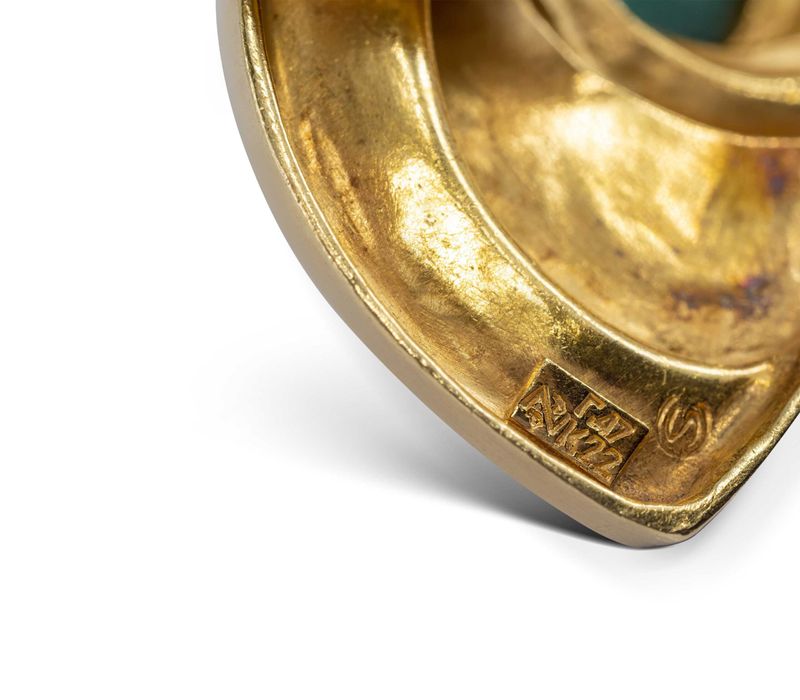
Craftsmanship can be the sparkle in the eye of vintage jewelry. I once held a piece that felt like a miniature sculpture, every detail meticulously crafted—even the backside was a work of art!
High-quality craftsmanship means the setting is detailed, secure, and clearly handcrafted. This attention to detail can be a sign it was made with care—and maybe money in mind. A piece with visible screws or uneven stones might be a mass-produced imposter.
Take a moment to admire the artistry. A beautifully crafted piece has a unique aura, a testament to the jeweler’s skill. Next time you’re examining jewelry, look closely to spot those fine details—they’re the hallmark of a masterpiece.
6. It’s From a Desirable Era
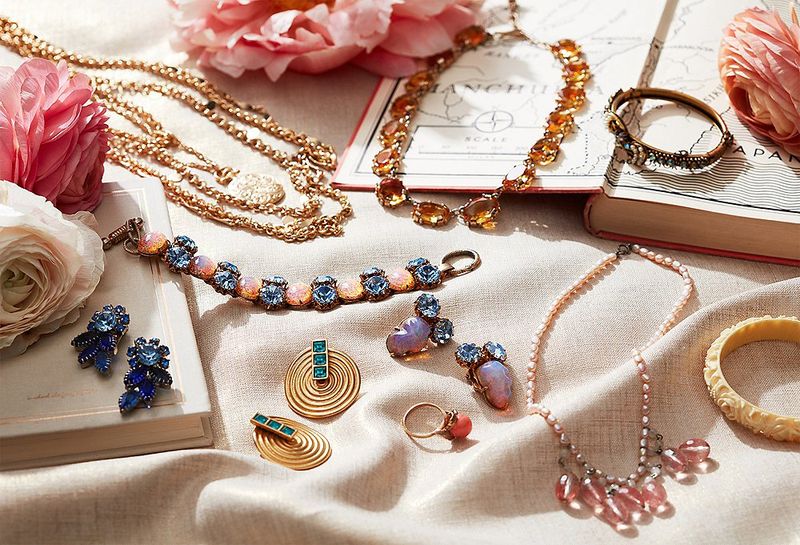
Eras matter when it comes to vintage allure. If your jewelry looks like it time-traveled from Art Deco (1920s–30s), Victorian (1837–1901), Edwardian, or Mid-Century Modern times, that’s promising!
These periods are known for their distinct styles and high desirability among collectors. Each era tells its own story, with designs that are often iconic and instantly recognizable. I stumbled upon an Art Deco bracelet that seemed to whisper tales of the Roaring Twenties—turns out, it was a collector’s dream!
Identifying the era can boost your piece’s value significantly. So, study those styles and familiarize yourself with what makes each era special. Your jewelry’s age might just be its golden ticket to becoming a prized possession.
7. It Has Patina (and That’s a Good Thing)
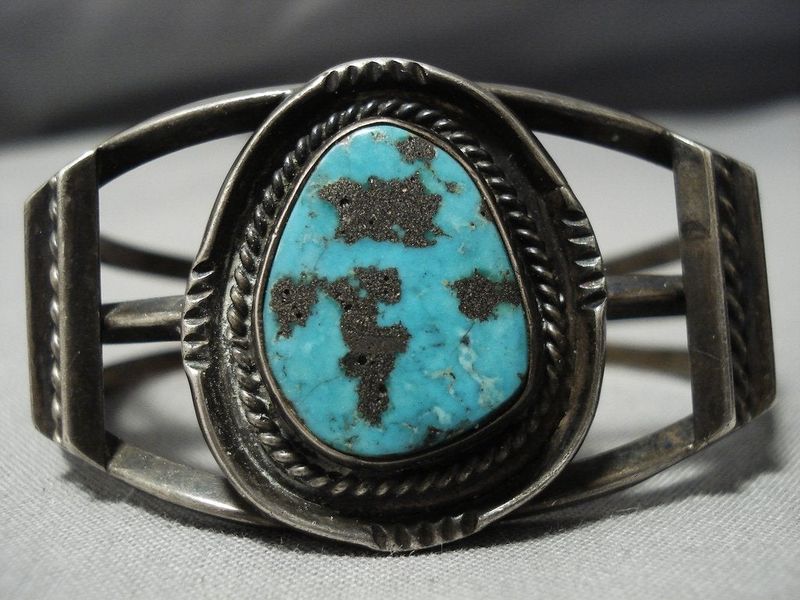
Ah, patina, the gentle aging process that adds a touch of history to your jewelry. That soft tarnish on silver or gold? It shows age and authenticity. When I first spotted it on an old ring of mine, I thought I needed to polish it off. Thank goodness I didn’t!
Patina can actually enhance a piece’s value, showcasing its age and adding a unique character. It’s like a fine wine, improving with time. Scrubbing it away could erase years of charm and potentially, value.
Next time you spot patina, appreciate it as an asset. It’s a sign your piece has been on a journey, gathering stories and, hopefully, a bit of worth along the way. Embrace the tarnish—it’s part of the magic!
8. You Can’t Find Another One Like It
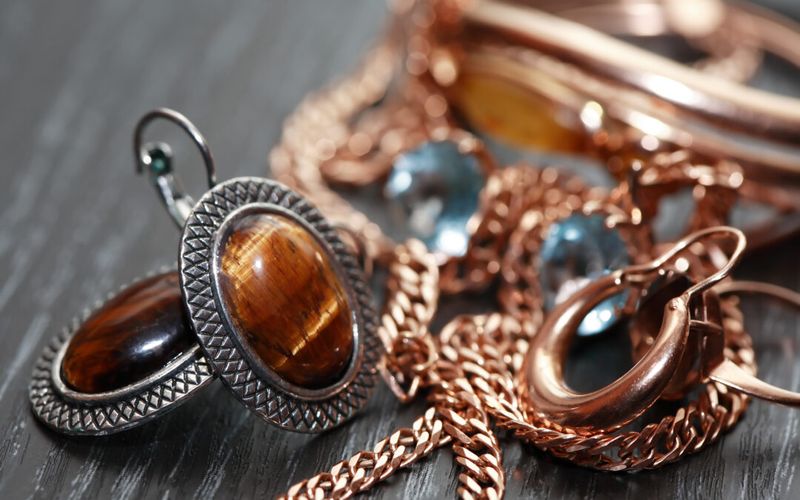
If a piece seems rare or unusual—like it skipped mass production—it might be one-of-a-kind or a limited run. My aunt once gifted me a necklace that looked so unique, I couldn’t find another like it online or in stores! Cha-ching.
The rarity factor can significantly increase a piece’s value. If you can’t find another like it, that exclusivity might make it a collector’s dream. Limited runs and unique designs are prized for their scarcity and individuality.
When assessing your jewelry, consider its uniqueness. Stand out pieces often have stories and value that mass-produced items can’t match. Who knows, you might just have a rare gem that’s worth its weight in gold—or more!
9. It Came in an Original Box or Pouch
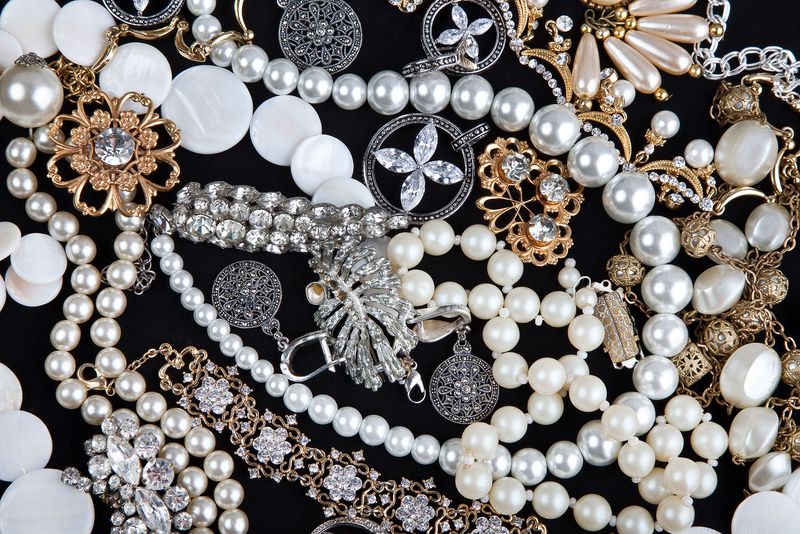
Original packaging can boost value significantly, especially with luxury or antique brands. When I opened an old jewelry box to find not just a necklace but its branded pouch too, it felt like hitting the jackpot!
Packaging can tell a lot about a piece’s origins and history. It acts as a certificate of authenticity, proving the piece’s provenance. Collectors love original boxes and pouches for the complete historical package they offer.
Next time you come across ancient accessories, check for boxes or pouches. They’re the unsung heroes in the world of vintage jewelry, quietly adding value and allure. Hold onto them—they’re as much a part of the treasure as the jewelry itself.
10. There’s an Interesting Backstory

Family heirlooms, estate sale finds, or war-time pieces can carry both sentimental and monetary value. Provenance is powerful. I once discovered that a brooch from my grandma’s collection had traveled across continents during WW2, adding a rich narrative to its charm.
An interesting backstory can elevate a piece from mere accessory to artifact. The history of an item, its journey through time, and its previous owners all add layers of intrigue and value.
When you stumble upon vintage pieces, dig into their past. A captivating backstory can make your jewelry not just valuable, but unforgettable. The tales that accompany your trinkets might just be the key to unlocking their true worth.
11. It Passed the Magnet Test
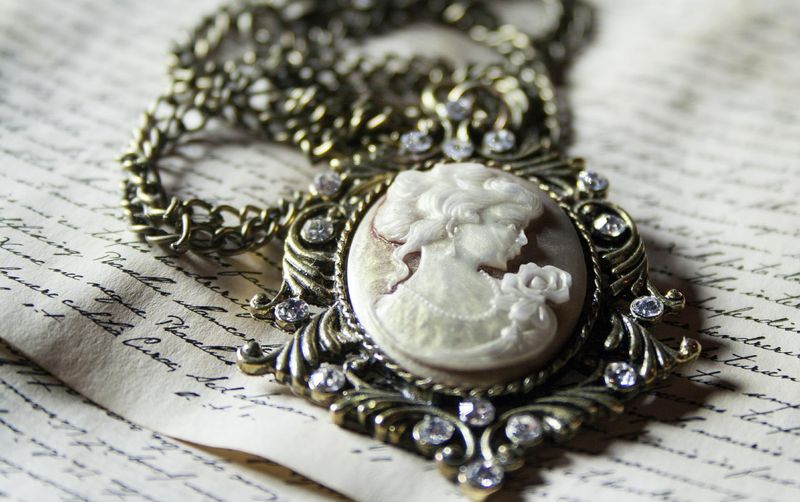
Hold a magnet up to the piece. Real gold and silver aren’t magnetic. If it sticks, it might be plated or fake. I remember my surprise when a seemingly gold bracelet turned out to be a phony after failing this test!
The magnet test is a simple yet effective way to evaluate authenticity. Real metals like gold and silver don’t react to magnets—if your jewelry does, it might just be masquerading as precious.
Next time you have doubts about a piece, grab a magnet and see if it passes the test. It’s a quick and easy tool for separating the genuine from the faux. Who knew magnets could be your best friend in the world of vintage jewelry?
12. The Clasp Style Is Old-School
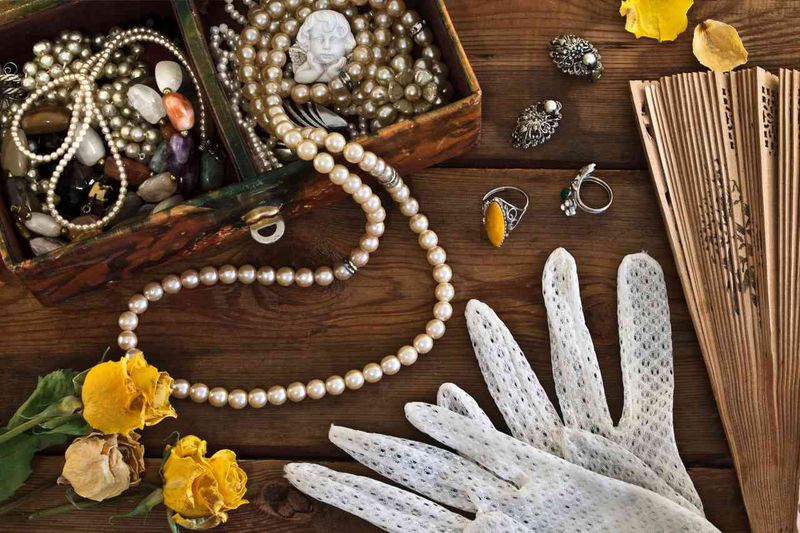
Clasp your hands and cheer if you spot a barrel clasp, C-clasp, or box clasp. These are clues to the era of your piece. Older clasps can mean older (and more valuable) jewelry.
I once found a bracelet with a box clasp that my jeweler friend identified as a sign of its Victorian origins. These old-school fastenings are more than just functional; they’re historical markers.
When examining your vintage collection, pay attention to the clasps. They can be subtle yet significant indicators of age and value. Your jewelry’s clasp might just be the key to unlocking its past and its price tag!
13. An Expert Got Excited

The best way to tell if your jewelry is worth anything? Have it appraised. If your local jeweler’s eyebrows raise even a little—you might be onto something sparkly and special.
Getting a professional opinion can provide insights you might miss. Experts know what to look for—be it a rare gem, a designer’s hallmark, or an antique clasp. Their excitement can be contagious and revealing.
Next time you’re curious about a piece’s value, consult an expert. Their knowledge and enthusiasm can turn your curiosity into certainty. And who knows? You might just walk out with a dazzling appraisal and a newfound love for your vintage treasure!
